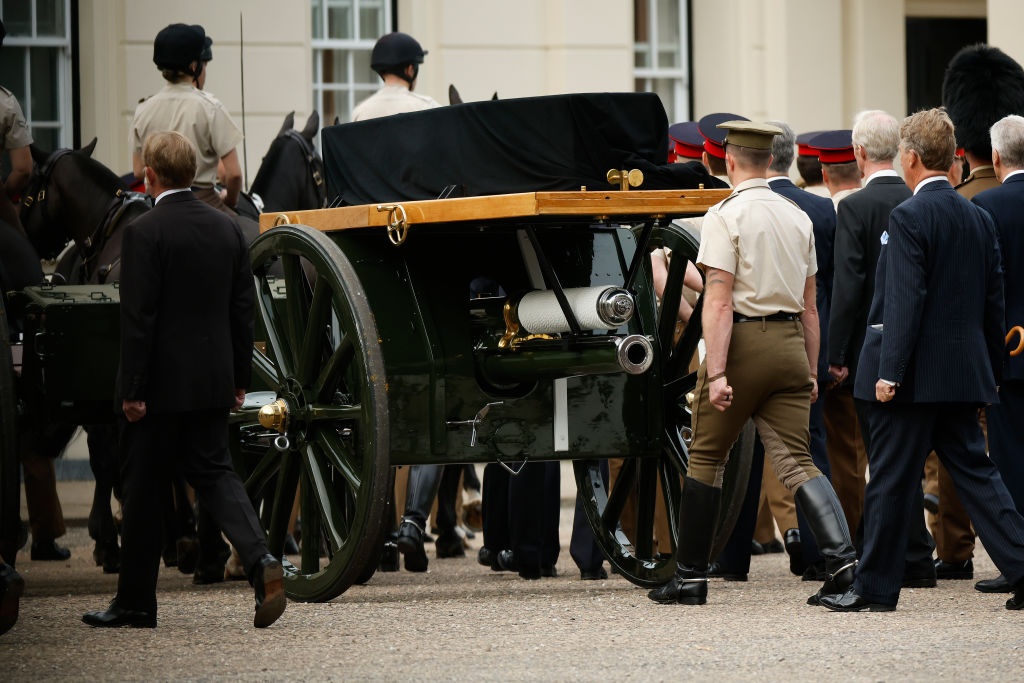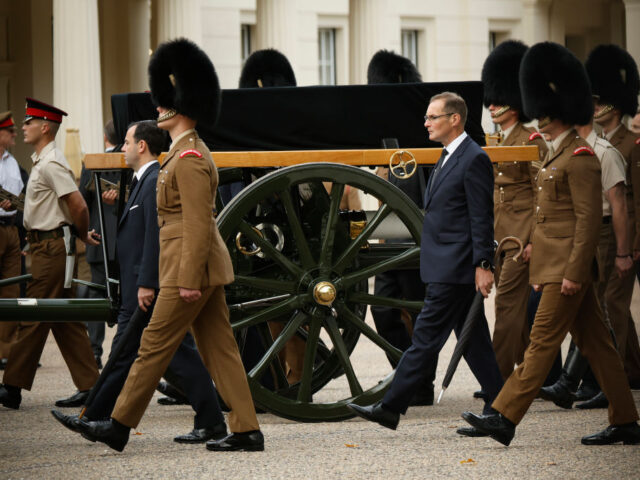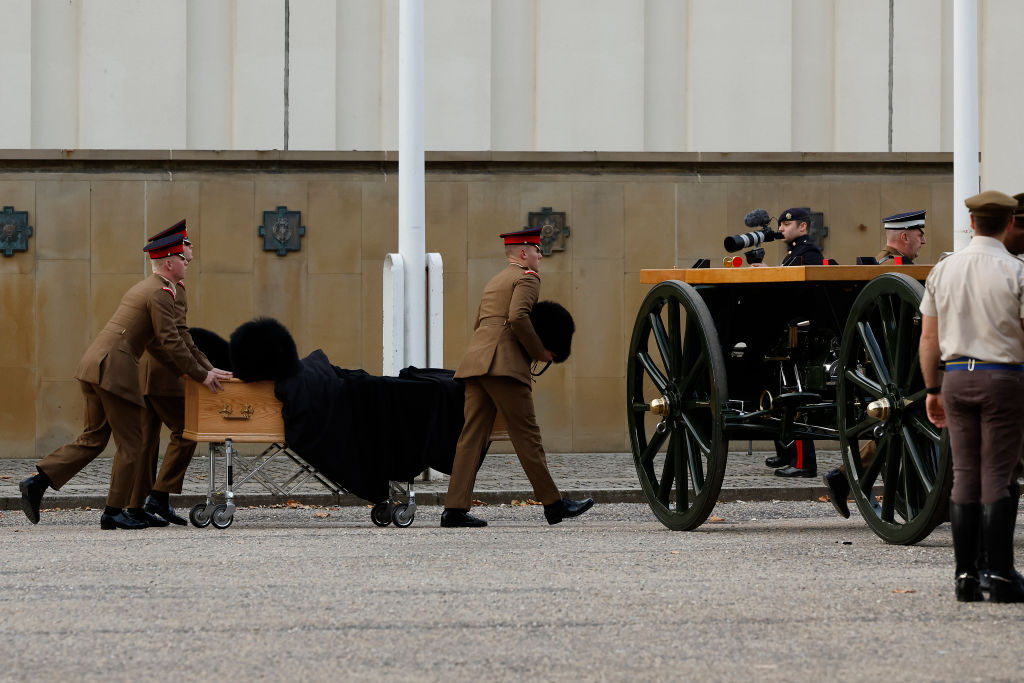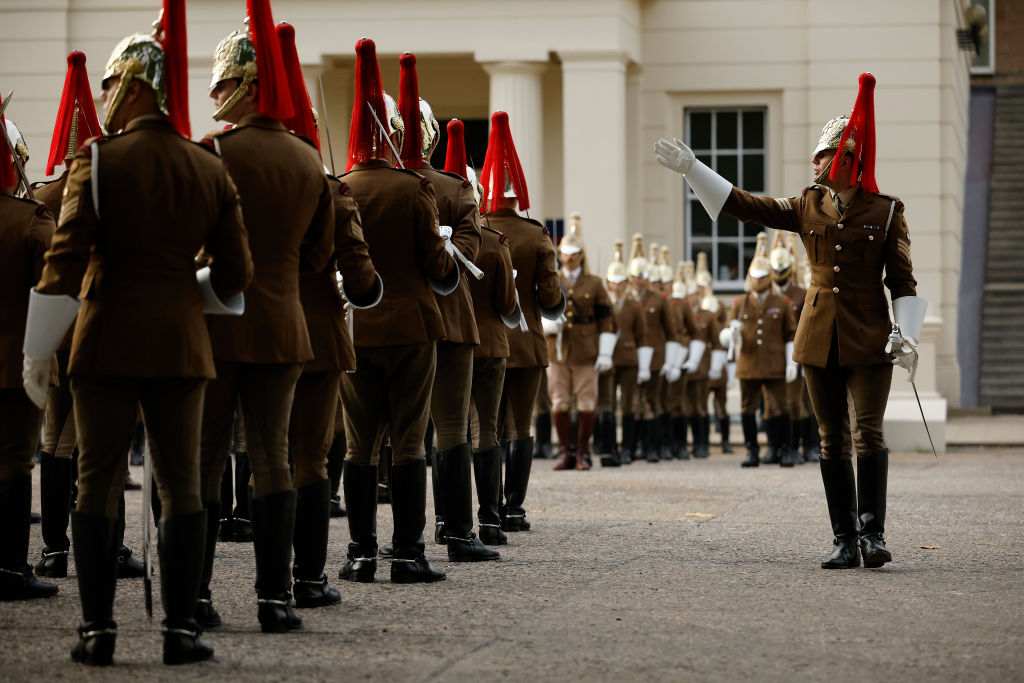Soldiers and officials have, using a gun carriage and prop coffin, rehearsed the final journey of Elizabeth II in London in preparation for the clockwork-like precision required in one week’s times the Queen is laid to rest before the world.
The late Queen Elizabeth II will lie in state in Westminster Hall until Monday 19th, at which point the most meticulously and longest-planned military operation in history will swing into place, the Royal funeral.

LONDON, ENGLAND – SEPTEMBER 12: Dress rehearsal for the funeral of Queen Elizabeth II at Wellington Barracks (Photo by Chip Somodevilla/Getty Images)

A prop casket is is carried on a gun carriage as members of the British military conduct a dress rehearsal for the funeral of Queen Elizabeth II at Wellington Barracks. Off duty or retired members of the Guards are recognised by their off-duty uniform of striped suits, highly polished black shoes, and tightly furled umbrellas carried at slope. (Photo by Chip Somodevilla/Getty Images)
The State Funeral of Her Majesty The Queen will take place at Westminster Abbey on Monday 19th September at 1100 (0600EST), when the lying in state ends and the Queen’s coffin being taken in a procession to Westminster Abbey next door where the funeral will take place. After the service, the Queen will again travel to Windsor castle where a private internment ceremony in the Royal crypt will take place.
That these operations, which will include the Queen’s coffin being borne on the back of a ceremonial gun carriage in honour, will be watched by many millions of people worldwide, has seen some involved perform a dress rehearsal today. Soldiers in service dress uniforms and bearskin hats — rather than the full ceremonial scarlet tunics that will be worn next week — practised with the gun carriage used for state funerals and a prop coffin.
While the British Army is generally regarded as being among the best at ceremonial duties in the world, the elite Guards units are also first-class fighting soldiers and have been heavily involved in recent wars including Iraq and Afghanistan. Some key changes will be observable from the regular roster of ceremonial duties for this State Funeral as well, with items like regimental drums and drum major’s staffs shrouded in black fabric in a symbol of mourning.
By tradition, the gun carriage that bears the coffin in a state funeral is not drawn by horses, but rather by a team of sailors. This has been the case since 1901 when the Army horses pulling Queen Victoria’s coffin became spooked and threatened to turn the carriage over. Sailors of the Royal Navy took over instead and pulled the Queen through London by hand, and the tradition has remained since.



COMMENTS
Please let us know if you're having issues with commenting.